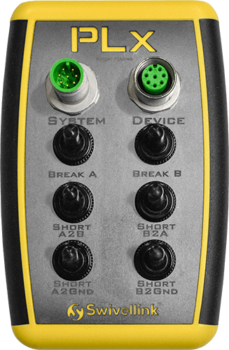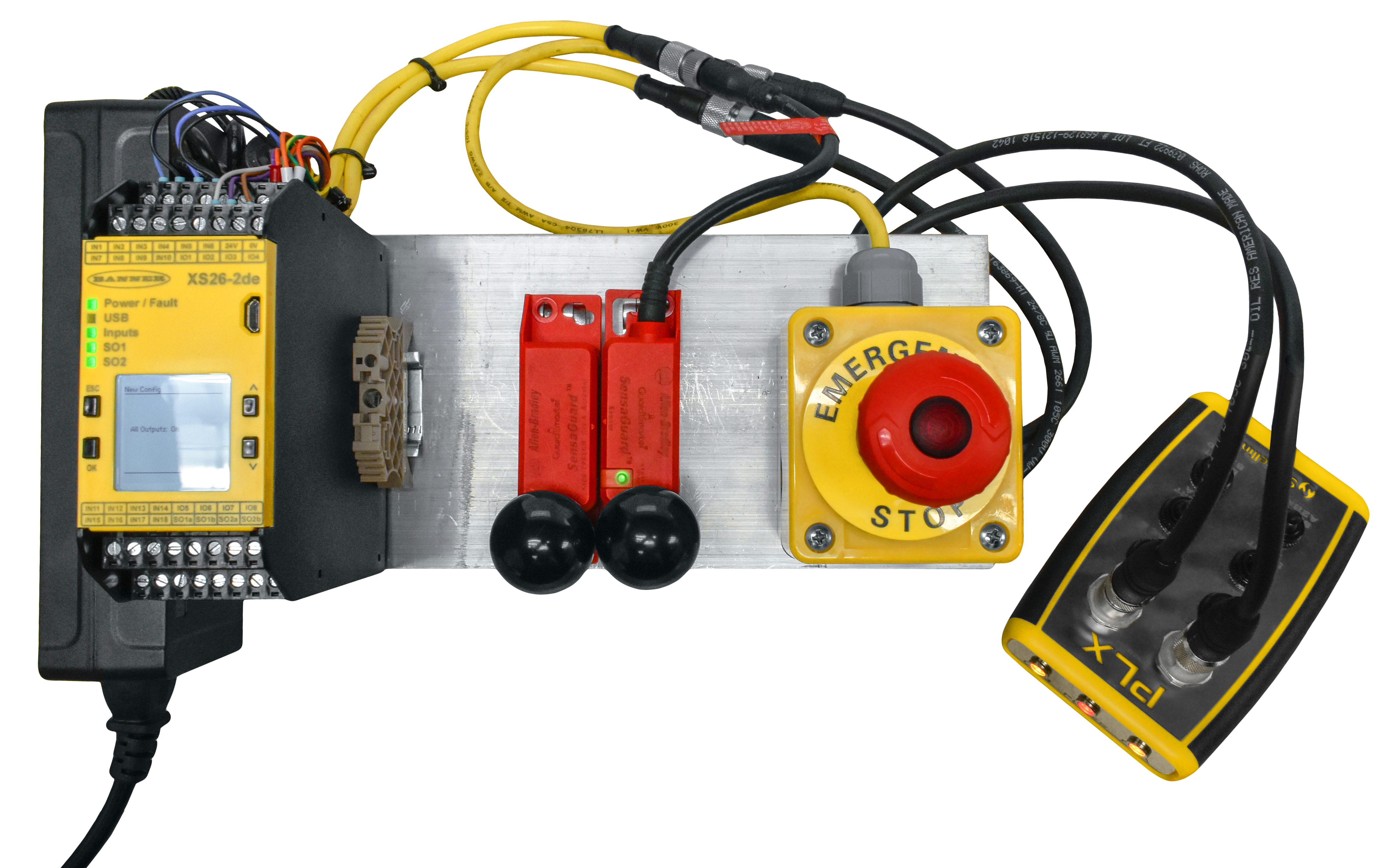The PLx family of safety validation devices are compact, hand-held devices that are designed to diagnose and induce faults in machinery safety systems to validate that the appropriate safety performance level has been achieved by the hardware design, manufacture, assembly, wiring, and programming of the system.
This device enables the user to induce faults into the safety system while monitoring both the built in PLx indicator status lights as well as the safety system controller for the proper result.
This is accomplished without removing single wires or inducing shorts through terminals.
The PLx was designed primarily for use on industrial manufacturing equipment. Testing of such systems is required by industry recognized safety standards on a regular basis.




